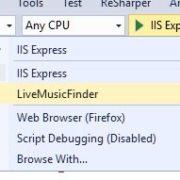I thought my first ASP.NET Core edition of Hello, Blinky would be my last, at least for a long time. But then something reminded me of Blazor, and I thought why not build a Blazor edition of Hello, Blinky for Windows IoT Core and Raspberry Pi? After some hacking, I made it work. Here’s my Hello, Blinky for Blazor.
You may also like: Building an ASP.NET Core »Hello, Blinky » IoT Application
Who the Heck Is Hello, Blinky?
Hello, Blinky is sort of like the "Hello, World" from Raspberry Pi and other microboards. While it’s possible to do a "Hello, World" with these boards, why not do something more interesting with connected electronics? Isn’t that what those boards were made for anyway?





